Southern Ocean —(Map)
Scientists watching hours of undersea video were surprised to see something that looked like a chicken without a head float past. The so-called “headless chicken monster” surprised and amazed the scientists, who at first didn’t know what it was.
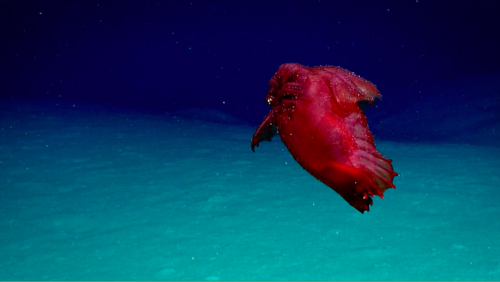
(Source: NOAA.)
The headless chicken monster is not really a chicken, but a sea cucumber.
Even the idea of an animal called a “sea cucumber” may seem strange. These creatures can have many different shapes and sizes, but they got their name because they often look like large cucumbers. They are very common, especially deep in the ocean. They often live on the sandy bottoms of the sea and suck small creatures called plankton from the sea floor.
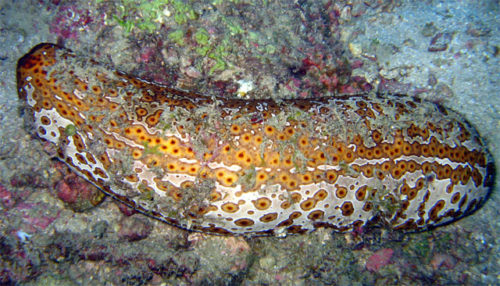
(Source: Anders Poulsen, Deep Blue (http://www.colours.dk/), via Wikimedia Commons.)
Most sea cucumbers are very limited in how much and how fast they can move. But the headless chicken monster has special fins and flaps that it can use to move around. These flaps help it move up or down in the sea very quickly. They help it to travel and can allow it to escape if something is trying to catch and eat it.
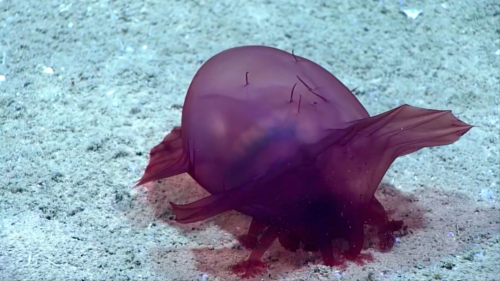
(Source: NOAA.)
Since it lives deep under the ocean, the headless chicken monster is not well known. When the Australian scientists first saw it, they didn’t know what they were looking at. They used the Internet to help them find the answer.
They learned that the official name of the headless chicken monster is Enypniastes eximia. There had been reports of the swimming sea cucumber since the 1800s, but in 2017 another group of scientists had also taken a video – in an entirely different place.
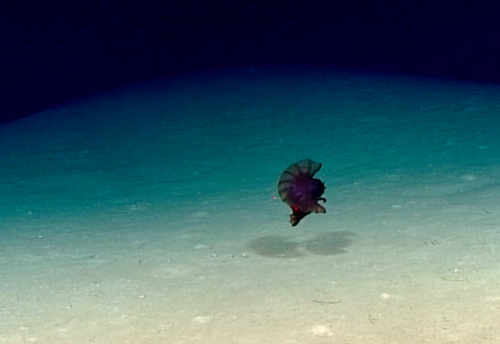
(Source: NOAA.)
In 2017, a US research ship traveling in the Gulf of Mexico took the first video ever of the headless chicken monster. But they took their video of Enypniastes eximia thousands of miles away.
So the Australian scientists were surprised to find the chicken monster down near Antarctica. Before this, no one knew that Enypniastes eximia could be found in the Southern Ocean. The Southern Ocean is the only ocean which runs all the way around the world without being broken by land. But it has not been well explored because it is far away and the weather can be harsh.
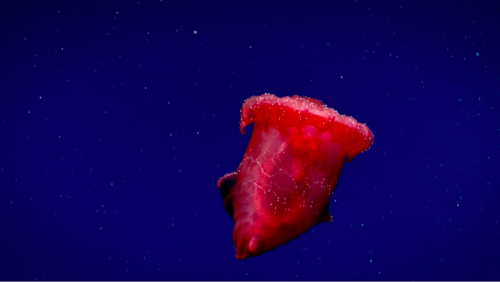
(Source: NOAA.)
The scientists found the chicken monster at a depth of about 2 miles (3 kilometers) below the surface of the sea. To get the pictures, the scientists used a very tough camera that is usually used by fishermen. The camera can be tied to a fishing line and dropped over the side of a boat. This method lets the scientists check out areas much deeper than they’ve been able to explore before. They are excited because it will help them learn more about unexplored areas of the sea.
The leader of the Australian scientists, Dirk Welsford, said the new information about Enypniastes eximia is a sign “of how little we know about the deep sea and the strange things we see while doing studies down there.”
😕
This map has not been loaded because of your cookie choices. To view the content, you can accept 'Non-necessary' cookies.
